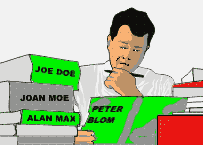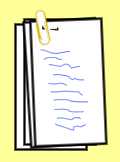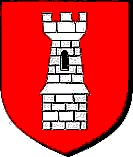Home Search Level 0 Level 1 Level 2 Level 3 Level 4 Level 4Pro Level 5 C/Sing Solo
| Tech terms | Scales | Axioms | Drills | Checksheets | Processes | Prep. lists | C/S terms | C/S tool | Grades | Cramm | Points | KTW | Online |
|
Home Search Level 0 Level 1 Level 2 Level 3 Level 4 Level 4Pro Level 5 C/Sing Solo |
|
|
| Tech terms | Scales | Axioms | Drills | Checksheets | Processes | Prep. lists | C/S terms | C/S tool | Grades | Cramm | Points | KTW | Online | |
|
C/S Tools: |
|
|
 |
pc: N.N.
Date xx/xx/xx VERY WELL DONE- Mr. C/S
C/S OK. Mr. C/S. |
|
C/S, the Case Supervisor. He |
C/S, The Case Supervisor's |
Case-supervision is a skill that is best done by an expert. There is a lot to know about it and a good C/S is the one person that really knows how to make the technology work. It is comparable to engineering. If you have one top notch expert this guy can make all the difference to a project or production. An expert C/S would know all the technology of CT and Scn on a practical level. This comes about through experience. He would be able to look at a combination of symptoms, study the folder to confirm his suspicions and would be able to resolve any and every case difficulty a pc is experiencing in short order.
The basic data of case supervision were written up by Ron Hubbard in the 1970s in the so-called C/S Series. It consists of some 130 HCOB's on the subject. But to be a true expert there is more to it than knowing these. The expert C/S should know all of the processes and remedies of the technology. Fortunately an expert of this skill level is not needed on a day-to-day basis. Where they exist they are capable of supervising dozens of auditors.
A C/S trained in this manual alone can do pretty well. Much of the C/S Series were research papers and a record of the evolution of the subject. The push was to package all of the technology into the simplest workable form possible. The long development of the Grade Chart streamlined and simplified the whole process. The extensive development and use of correction lists made it possible to get the pc back on track if he ran into difficulties.
It may be more elegant to be able to say: "The pc is stuck in such and such an incident. Use this one process and he will snap out of it". Such an approach is only successful in expert hands and even experts don't recommend it. It is however important to know that the correction lists themselves contain a wealth of information. You could say the essence of the whole C/S Series is packaged into the Lists with their recipes for handling all kinds of situations.
 |
As long as a C/S ensures his auditors |
As long as a C/S' auditors apply good basic TRs and metering and are able to make prepared lists read, almost any tangle can be resolved by assessing correction lists and follow the instructions. Thus an CT C/S (and any C/S for that matter) has to keep a close eye on and improve his auditors' basic skills continuously. TRs, Meter skills and Assessment skills do not show up in a written report. But the C/S would from time to time request sessions recorded on tape (video or audio) to ensure the quality of these basic skills and drill his auditors up to the needed skill level, when lacking.
He can do that personally if no other option is available. His goal is however to make his auditors capable of observing exactly what is going on. Truth told, the better the skills of the auditor are the sooner he will catch any small mistakes or problems in session and be able to repair it with TR-4 or other less disruptive means.It is a workable set-up today to do all the routine actions without knowing all the ins and outs of how to fix any and all situations. The basic program for any pc is the Grade Chat after all. If you have a hot-line to a remote expert C/S and you case supervise your local auditing activities on a daily basis, and know when to call in the expert, you can actually complete most cases and get a real production going. This is the set-up we have in mind here. The few cases you feel you can't honestly help locally should be directed to the true experts, where a full application of all of the options the technology has certainly will crack their cases.
Mid-level Technician
The Clearing Technology Case Supervisor is a mid-level technician. A
person, when fully trained in this manual, who can solve about 90-95% of the
situations he runs into. When he doesn't know exactly how to go about resolving
a situation he calls in the expert and gets advice and training in how to
overcome the difficulty. That resolved he is up and running again and can keep
going for a long time.
Stable Data for the CT
C/S
Make sure your auditors are well trained in their basic skills.
The basic skills are:
(1) TRs,
(2) metering,
(3) Auditors Code and
(4) completing cycles of action on a pc.
The C/S has always had the right to assign his auditors to drill some more, to study some more up to a level where he is confident they can do it right. The results he can expect on pc's will only be as good as his auditors can do (1) - (4). Also the auditor's reports do not show these things really well and they have to be checked out by direct inspection. This includes recording sessions on video and audio.
|
When a C/S watches closely and improves his auditors' basic skills his work is easy: |
|||
|
|

|
|
|
|
TRs (Comm Cycle) |
Metering |
Auditors Code |
Completing Cycles on Pc's |
For relatively new auditors and a smaller operation it pays for the C/S to personally check his auditors out in how to audit a process by checking them out on the theory and have them drill the process on a doll until the auditor and the C/S are both confident that the auditor can do it perfectly under trying circumstances. In a larger operation there will be a course room and a separate cramming section that does it for him. But starting out both the auditor and the C/S need a hands-on certainty about what exactly is being done and how. And this should be the C/S' basic attitude no matter how big the operation is. He has to be willing and able to step in at any point and demand that the basic skills of an auditor are the best they can be. It saves him from a lot of hardship to make this his top priority. The number of "mysterious cases" will reduce in direct ratio. It also saves the pc's and auditors for failed sessions.
|
Grade Chart |
| Data: Charlie new to auditing. He needs standard Grades. Interview shows he is ready. |
| 1. Life Repair |
| 2. Cleansing RD |
| 3. Objectives |
| 4. Recall Drug RD |
| 5. Recall Grade |
| 6. Grade 0 |
| 7. Grade 1 |
| 8. Grade 2 |
| 9. Grade 3 |
| 10. Grade 4 |
| 11. Engram Clearing |
Programs
The C/S always designs and works from a program. The basic program of any CT
auditing is the Grade Chart. But each process on the Grade Chart is a Major
Action and according to 'Auditors Rights' you do not start a Major Action
unless the pc is F/N and VGI's. Therefore the pc will from time to time need a
set-up program or repair to make him ready for Major Actions. On a daily basis
the auditor will at least check the rudiments.
Also, if Grades and processes already done at a later time are found to be "out", meaning the pc is still hung up on them and did not get the expected benefits from them, repair is needed. The pc will first need a short repair (set-up), then he will need to complete these processes to their full End Phenomena. In the case of a Grade or Grades being out, previous processes run on that Grade will have to be checked and rehabbed or flattened if found unflat and additional items and processes may have to be run.
The C/S' work has a lot in common with good book-keeping. He has to carefully keep track of actions and their orderly succession and completion much as a book-keeper has to keep track of money and receipts. A good book-keeper will make sure money are spent wisely and correctly according to the company's or organization's rules and regulations, goals and purposes. When they are spent he will make sure that the goods bought are OK and put to good use. He will not accept the purchase of a machine that is never put to good use or just given a spin and then abandoned.
In a similar way, you could say, the C/S designs the basic program for the pc. This is much like spending money to the book keeper. He will make sure each process is put to good use and the overall program is completed to the desired EP. The EP of a program may come about before all of the program is done, which is fine. The EP is what the C/S wanted, not just all the steps being done mechanically.
Sometimes the EP has not been brought about even though all the steps are done. In this case the C/S has to dive into his pocket to find additional steps for the auditor to do on the pc; he has to do an additional investment. He will watch it like a hawk to see that the auditor spends this investment right and gets the desired result on the pc. By completing programs in this fashion the pc's case will improve on a steady basis. It is an orderly campaign being conducted against the pc's Bank and case. Done this way the Bank does not stand a chance.
|
pc:
N.N.
Date xx/xx/xx VERY WELL DONE- Mr. C/S
C/S OK. Mr. C/S. |
|
The Case Supervisor |
Session Instructions
The C/S grades the auditor's work. It can be from "Very Well Done"
for a technically prefect session to "Flunk" for an awful auditor
performance. The auditor with just a little bit of experience would suggest his
own C/S instructions and ask the C/S to look them over and approve of them or
write up new instructions for the auditor to go on. The auditor always works
from written instructions.
Even an experienced field auditor working for himself would do that. If he had no C/S he would still C/S his own work and grade it. He would simply change hat after session and read through his own report, grade his work and write up a new instruction for the next session.
If an instruction is found to be unworkable, the auditor always has the options included in "Auditors Rights" he can apply. If he realizes it is still unworkable he should make sure to write down his full observation of the situation and end off. The reason for this is, that you do not want auditors to "C/S in the Chair", meaning coming up with new processes and ideas to do on the fly. This leads to incomplete cycles on pc's - Q and A. What you want is an orderly program executed in an orderly manner. This is how you keep getting results. This can seem a bit bureaucratic at times, but what works over time is proceeding from an orderly plan that is well thought out beforehand and then executed by the book. If it didn't produce the desired result you regroup and make a new plan before launching a new attack on the Bank.
 |
 |
When the auditor is done with the |
When the auditor is done with a session, he writes up his session, including Auditors Report Form, Folder Summary, etc., etc. per Auditors Admin chapter on CT-0. He then writes a suggested C/S for the next session and turns in his pc's folder to the C/S. Any communication about the pc between auditor and C/S is strictly done in writing. This ensures it all becomes part of the written record. You also want the C/S to keep a distance from the activity and any undue attempts to influence him by emotional talk. C/Sing has to be an objective thing based on the evidence and technical facts of the situation. The C/S simply looks over the folder, checks references, checks the pc's program and writes up or approves the next C/S for the auditor to do.
 |
Ivory Tower Rule:
|
In looking over the session report the C/S will first check what instructions the auditor was supposed to do and make sure, that was what the auditor did. He will then check the overall outcome of the session. If there is a pc Examiner form it should show F/N and VGI's for the pc to be satisfactory. Also the session itself should end with an F/N, VGIs pc.
He would then check that each process run was run to its proper EP. Next, he would read the details of the worksheets to make sure all was done according to the technical materials. He would make sure there were more good indicators than bad indicators, including good TA action and visible changes in the pc. Pc gains is what he and the auditor is working for in the final analysis. Good TA action means the pc is winning. Little or no TA action means it's not working right. The session is thus ultimately for the pc, but the C/S is doing "Quality Control" on the auditor's work. If he sees the auditor has misapplied the written materials in some way he will write a study order (on a Pink Sheet) or a cramming order for the auditor to do before he takes the same pc in session again.
 |
Usually the C/S has an
instructor Picture: Instructor |
Handling Auditors
The C/S has two main responsibilities, 1) he handles his auditors
by on-the-job-training. 2) His ultimate responsibility is handling and solving the
pc's cases. He is the person that programs
the cases in the first place and ensures the programs are actually carried out
and carried out correctly. He does not discuss the pc's case with the auditor except in writing through the pc's folder.
If he drills his auditors himself they
do not discuss pc's cases but can of course otherwise interact normally.
When handling auditors he should act in a way as to encourage them to do their best by a positive attitude and acknowledge them for what they do right. At the same time he should not compromise the technology or the standard procedures. They are the way they are and done the way described in this manual for a reason. The reason is hard won experience and successfully passing the test of time. There is a right way and a wrong way to do any process and the C/S makes sure his auditors do it the right way so his pc's keep winning and progressing through the Grades. If he does less than protecting the materials from being misapplied he is doing everybody a disfavor; auditors, pc's and himself. He has to live up to his responsibility and hat and do what it demands of him.
If he is doing exactly that his auditors will quickly grow and improve their skills and abilities and the pc's will really win and he as a C/S will grow in confidence and reputation.
 |
The C/S solves pc's cases by |
Solving Pc's Cases
As a pc's folder grows in size due to lots of good auditing
there is more and more auditing history to keep track of. Thus for an
extensively audited pc a folder study has to be done at different points. This
Mini Hat is based on (1) Understanding the basic technology very well and (2)
Folder Error Summaries (FES) as its stable data. An FES is a summary of auditing
errors and pc difficulties. Knowing how things are supposed to run and knowing
where it was less than perfect gives the scope of the C/S' work. When things are
not running right the case has to be studied. You do a folder study. It is how
you solve case difficulties. When an FES is done a Summary Form is usually
filled out. Looking over such a Summary an experienced C/S will right away know
how to get a pc back on track and winning on the Grades. We have expanded these
Folder Error Summaries into Trouble Shooter Tools by listing references and
handlings applicable to the many different situations they reveal. Thus folder
study and the Trouble Shooter Lists are your ultimate weapons in solving
difficult situations.

|
C/S Tools: |
|
Home Search Level 0 Level 1 Level 2 Level 3 Level 4 Level 4Pro Level 5 C/Sing Solo |
|
|
| Tech terms | Scales | Axioms | Drills | Checksheets | Processes | Prep. lists | C/S terms | C/S tool | Grades | Cramm | Points | KTW | Online | |